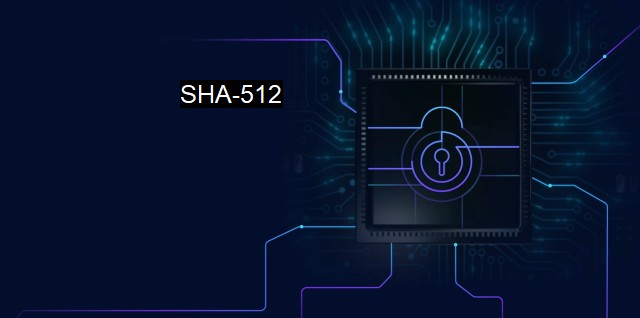What is SHA-512?
The Importance of SHA-512 in Cybersecurity: Understanding Cryptographic Hashing and Hash Functions
SHA-512 is a cryptographic hash function, a staple component in the world of cybersecurity and antivirus software development. It belongs to the SHA-2 (Secure Hash Algorithm 2) family, a set of hash functions designed by the National Security Agency (NSA) and published by the National Institute of Standards and Technology (NIST) in 2001.SHA-512 provides increased identity verification capabilities and data integrity, making it one of the go-to protocols for developers of antivirus software and cybersecurity solutions. It utilizes complex mathematical algorithms that take an input and turns it into a lengthy, fixed-size string of bytes. The chance of the output (the hash) being identical for two different inputs is astronomically reduced, ensuring the uniqueness of each set of data passed through.
The mechanics of the SHA-512 function are quite technical. The data inputted into the system before being processed is message-padded to guarantee a length divisibility by 1024. From there, the input message (already being segmented into 1024 bits), gets divided into blocks before the algorithm begins to process it.
This block size differs from the previous SHA-256, which operates on 512-bit chunks. SHA-512 includes 80 rounds of transformations, using a series of Boolean functions and logical operations such as AND and NOT operations, as well as bitwise additions and rotations. This wider internal state and use of more rounds significantly differ from remaining SHA-2 family members.
An important characteristic of SHA-512 hash function is its irreversible nature. It isn't feasible to compute the original message from the derived hash output, protecting the confidentiality of the information against brute-force reverse-hash attempts. Thus, it offers an enhanced layer of security, making it extremely challenging for hackers or malware to compromise encrypted information.
In terms of application, we can find the SHA-512 as a crucial element in certificate authorities' issuance of SSL or TLS certificates, ensuring the integrity of web sessions and in PKI certificates for secure email, document signing, and VPN access. SHA-512's longer hash length acronym offers a larger memory footprint and slower computation time. it brings considerably stronger security and is thus utilized by organizations requiring exceptionally high-security situations.
Regarding its role in antivirus software, SHA-512 aids in securely handling malware detections, customer credential management, and much more. By implementing the SHA-512, the chance of rendering the correct password through guessing, or 'brute forcing,' can be impossibly tough. It establishes that the antivirus databases remain uncompromised, and the users are consecutively protected from emerging threats.
Considering future perspectives, SHA-512 is expected to be replaced ultimately over the coming decade by more advanced hash functions, like those in the SHA-3 family, which boasts stronger cryptographic assurances and improved performance speed. While this future switch takes place, SHA-512 will remain a critical tool in the war against cyber threats and will continue to symbolize a cornerstone in data integrity and password security.
SHA-512 carries insurmountable importance in terms of data protection, particularly in the present times of proliferating cyber threats. As a cryptographic hash function, it provides a robust, seemingly uncrackable method for confirming the integrity of information and reducing the occurrence of data duplication in expansive infrastructures. Whether through the development of impenetrable antivirus software or trust certificates for websites, simply put, the fundamental purpose of SHA-512 is to successfully identify, differentiate, and protect data.

SHA-512 FAQs
What is sha-512 and how is it used in cybersecurity?
SHA-512 is a cryptographic hash function that generates a unique and fixed-size output from any input data. It's commonly used in cybersecurity to ensure data integrity, verify message authenticity, and protect against data tampering.How does sha-512 differ from other hash functions?
Sha-512 is a part of SHA-2 family of hash functions and is considered more secure than its predecessor SHA-1. It produces a longer hash value than SHA-256 making it more secure from brute force attacks.How is sha-512 used in antivirus software?
Antivirus software uses sha-512 to generate a unique hash value for known malware samples. These hashes are then stored in the antivirus database and when a file is scanned, its hash value is compared against the database to check if it matches with any known malware. This helps in detecting and removing malware from the system.Can sha-512 hash values be reverse-engineered to reveal the original data?
No, sha-512 hash values cannot be reversed to reveal original data. They are a one-way function and the original data cannot be reconstructed from the hash value.Related Topics
Hash Algorithms Cryptography Password Security Secure Authentication Digital Signatures
| | A | | | B | | | C | | | D | | | E | | | F | | | G | | | H | | | I | | | J | | | K | | | L | | | M | |
| | N | | | O | | | P | | | Q | | | R | | | S | | | T | | | U | | | V | | | W | | | X | | | Y | | | Z | |
| | 1 | | | 2 | | | 3 | | | 4 | | | 7 | | | 8 | | |||||||